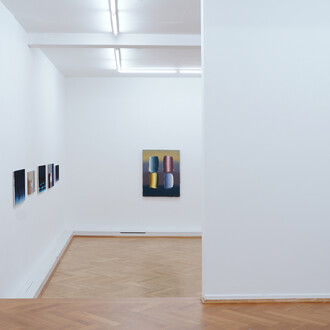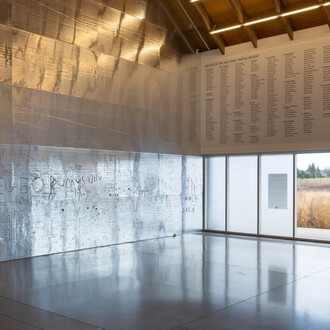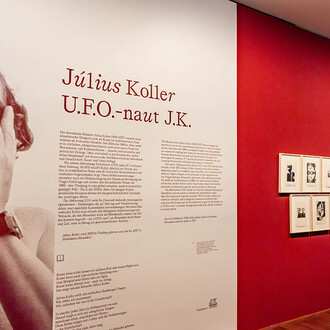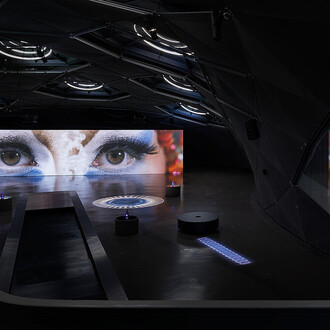Galerie Mario Mazzoli proudly presents the first solo exhibition in Germany of Norwegian artist Kristoffer Myskja (Oslo, 1985).
The works in the exhibition are driven by the artist’s fascination towards the transition from alchemy to modern science. Indeed, in Myskja’s works one can find elements typical of both disciplines and their methodologies. The materials used (such as mercury and gold as found in “Splitting the mercury drop in order to find balance” and in “Covering up Gold”), the delicate balance between contrasting forces (“Governors”) and the ritual element (“Smoking Machine”) are a reference to alchemy. On the other hand, the means and the process through which he creates his pieces, along with his accuracy and engineer-like precision, are typical of the modern scientist.
The enchanting-character of the works, however, is a function of the artist’s rare ability to harmonize those elements, driving the viewer’s attention toward a sculpture that is mechanical in nature, but nonetheless poetic, suggestive and hermetic.
The show’s title, “Hermetic Mechanics,” indicates the hidden and impenetrable character which connects all works by Kristoffer Myskja, and even more it underlines their being completely closed systems, namely independent mechanisms that entirely exclude human interaction. Myskja therefore creates machines that are paradoxically useless, altering their raison d’être, which is providing indispensable help to human enterprises.
A ghost in the machine
When the industrial age came at the beginning of the 19th century a total transformation of the area of production started taking place. The old craftsmanship of making shoes or barrels – and a million other things – was to be replaced with the knowledge of machines. But, on the other hand, the outsourcing of knowledge to machines, of know-how, also robbed men of a sense of wholeness. Karl Marx famously called this effect alienation; an experience where techne, practical knowledge, materialized in the machine and men were reduced to mere cogwheels in the production.
150 years later we are still in a capitalist society, but the outsourcing of knowledge, of the understanding of how to do things, are threatened on another level. The French philosopher Bernard Stiegler has repeatedly told us the last years that alienation is not restricted to the making of things any more, but has spread to life, bios, itself. We are surrounded with machines, or rather black boxes, with preformatted standards for how to act and think, for how to live. When we, in our innermost social and emotional being, are about to enter another alienated stage, we are, in fact, not just cogwheels in the machine, but machines ourselves, Stiegler warns us.
What should we do? Some would suggest a luddite position, where digital machines per se, which are largely social, should be abandoned. But a nostalgic utopianism looking back at a golden age, is hardly any solution. Another way of handling the issue at hand, however, could be introduced by pedagogical models which make us understand our predicament and remind us of the value of doing things ourselves.
Kristoffer Myskjas art is doing precisely this critical work: all his machines, and their parts, are made entirely by himself, so as to remind us of the timeless value of techne, of supervising the production of both commodities and life itself. The essence of the machine, we should remember, is to relieve the individual of the strenuous task of doing things, but with Myskja the machine becomes the opposite.
Like a Trojan horse the pre-industrial concept of techne is smuggled into both the physical machine and machine as a cultural metaphor for progress. Myskjas idea of enlightenment, then, is not adding another machine doing our work, but rather making pedagogical machines, which remind us of the value of doing things ourselves.
Kjetil Røed
Galerie Mario Mazzoli
Potsdamer Straße, 132
D-10783 Berlin, Germany
Tel +49 (0)30 75459560
info@galeriemazzoli.com
Opening hours
From Tuesday to Saturday
12am-6pm and by appointment











